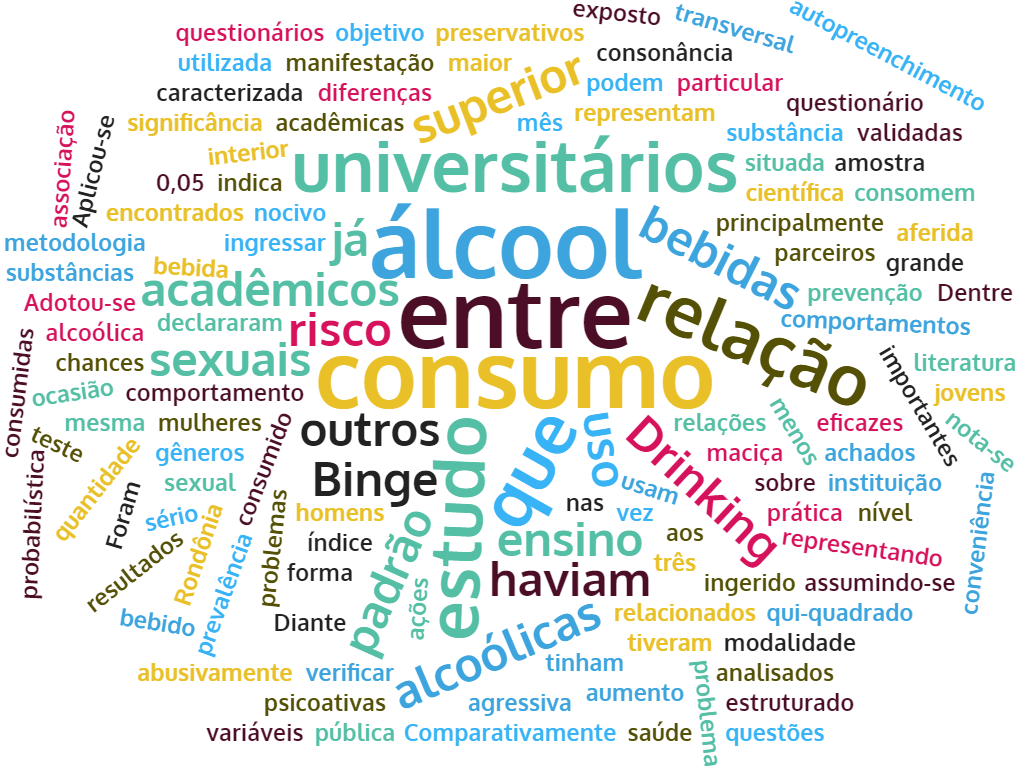Consumption of alcohol and other psychoactive substances between university students and the practice of binge drinking
DOI:
https://doi.org/10.52755/sas.v2i2.105Keywords:
Binge Drinking, Alcoholism, Alcoholic IntoxicationAbstract
Alcohol is among the most consumed psychoactive substances by higher education students, representing a serious public health problem. "Binge Drinking" is a category characterized by the consumption of a large quantity of alcohol on a single occasion. In view of the above stated, this study aimed to verify the prevalence and pattern of alcohol consumption by students of a private higher education institution located in the state of Rondônia countryside, Brazil. The cross-sectional study methodology was adopted utilizing a non-probabilistic convenience sample. A structured questionnaire was applied with validated questions for self-completion. The association between variables was assessed using the chi-square test, assuming a significance level of 5% (p <0.05). 525 questionnaires were analyzed. Among the results found, it is noted that 46.1% of academics abuse alcoholic beverages, 38.2% had drunk aggressively and massively at least once a month and 54.4% had already consumed alcoholic beverages before joining higher education. Compared to men, women represent the highest rate for consumption and most harmful consumption of alcohol (69%). Comparing alcohol consumption and risky behavior, 58.3% of university students declared that they did not use condoms during sexual intercourse, 13.7% had drunk alcohol before sexual intercourse and 53.1% had already had more than three sexual partners. In accordance with other findings in the scientific literature, this study indicates the relationship between the practice of Binge Drinking and the increased chances of manifesting problems related to the use of alcohol and other risky behaviors, especially among females. Differences in the pattern of consumption between genders can be important in more effective prevention actions on alcohol use among university students.
Downloads

Downloads
Published
How to Cite
Issue
Section
License
Copyright (c) 2021 André Tomaz Terra Júnior

This work is licensed under a Creative Commons Attribution-NonCommercial-ShareAlike 4.0 International License.
Autores concordam com os seguintes termos:
a) Os autores mantêm os direitos autorais e concedem à revista o direito de primeira publicação, com o trabalho simultaneamente licenciado sob a LicençaAttribution-NonCommercial-ShareAlike 4.0 International, que permite o compartilhamento do trabalho com reconhecimento da autoria e publicação inicial na Revista SAS. A licença permite o uso, a distribuição e a reprodução irrestrita, em qualquer meio, desde que devidamente citada a fonte. Essa licença permite também que outros remixem, adaptem e criem a partir do seu trabalho para fins não comerciais, desde que atribuam a você o devido crédito e que licenciem as novas criações sob termos idênticos.
b) Não cabe aos autores compensação financeira a qualquer título, por artigos ou resenhas publicados na South American Sciences.
c) Os conceitos expressos nos artigos publicados na South American Sciences são de inteira responsabilidade de seus autores.








